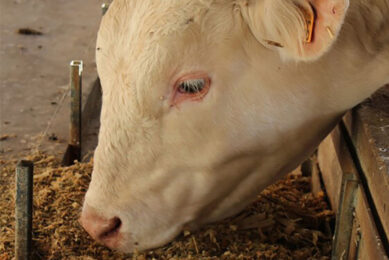Black aspergilli species responsible for infecting corn identified

US Department of Agriculture (USDA) scientists in Athens, Georgia, have reported for the first time that several species of Aspergillus niger, or black aspergilli, are capable of infecting corn and peanuts as endophytes.
The researchers also showed that, under laboratory conditions, these species produced mycotoxins.
Using a molecular procedure they developed, USDA Agricultural Research Service (ARS) research leader Charles Bacon, microbiologist Dorothy Hinton, and Edwin Palencia, a graduate student in the Department of Plant Pathology of the University of Georgia in Athens, identified more than 18 species of black aspergilli, several of which have the potential to produce mycotoxins.
ARS is USDA’s principal intramural scientific research agency, and this research supports the USDA priority of ensuring food safety.
Bacon and his team at the ARS Richard B. Russell Research Center in Athens also found that several A.niger species that were thought to be incapable of producing mycotoxins can produce ochratoxins—carcinogenic mycotoxins that can affect humans, livestock, and poultry.
These A. niger species were deemed as non-producers of mycotoxins based on in vitro culture media, but on corn they were indeed producers. The findings from that research were published in the journal Toxins.
Common contaminant
A. niger, one of a group of black-spored fungi, is a common contaminant on corn, peanuts, several other important food and feed ingredients, and products made from them.
Bacon and his team’s work suggest that species of A. niger are also contributors to the occurrence of fumonisins in corn, other cereals and food items.
Fumonisins are a class of mycotoxins that are known to be carcinogenic and are primarily produced by the Fusarium species of fungi. Some of the black aspergilli identified in this study are also producers of this mycotoxin.
According to the research team, the A. niger complex of species acts within corn and peanuts as an endophyte, living within the tissues of the plant, but causing no harm to the plant itself.
Three species of A. niger are identified in US corn and peanuts as symptomless endophytes, which suggests the potential for concern as pathogens and as food safety hazards.
Black aspergilli, generally viewed as post-harvest pathogens, produce rots of grapes, corn and numerous other fruits and grain.











